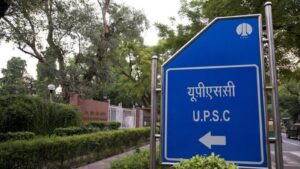Delhi likely to end year with no ‘good’ air days | Latest News Delhi

Not a single “good” air day – when the air quality index (AQI) falls below 50 – has been reported so far in 2024 in Delhi, data shows, and with only two months left (that too of winter, a time when pollution inevitably spikes), experts say it is quite likely that the year will end without a single such day.

Also Read: Delhi AQI falls further, toxic air sets off alarm bells ahead of winter
If this trend holds for the remaining year, 2024 will be the first year since 2018 when Delhi has not recorded a single “good” air day, according to Central Pollution Control Board (CPCB) data.
Also Read: Delhi AQI worsens: Check long-term dangers of exposure to toxic air on brain health
To be sure, thanks to an excess monsoon, the year has seen a few streaks where people received relief from the incessant problem of pollution. Towards mid-August, the city saw a streak of satisfactory days that lasted more than three weeks.
The cleanest day so far was recorded on September 13, when the AQI dropped to 52, in the “satisfactory” category.
Also Read: Delhi pollution 65 times above WHO acceptable limit just days after Diwali
CPCB classifies air as “good’ when the AQI is 50 or lower, as “satisfactory” when it is between 51 and 100, as “moderate” when it is between 101 and 200, as “poor” when it is between 201 and 300, as “very poor” when it is between 301 and 400 and “severe” when it is over 400.
To calculate AQI, CPCB looks at sub-indices of eight individual pollutants — PM10, PM2. 5, NO2, SO2, CO, O3, NH3, and Pb. The 24-hour average AQI is then calculated for the city based on data from Delhi’s 40 ambient air quality monitoring stations.
According to CPCB data, till November 3, Delhi had 66 “satisfactory” and 135 “moderate” air days, making it a total of 201 days when the AQI was 200 or less. Last year, Delhi had one “good” air day, 60 “satisfactory” days and 145 “moderate” air days, making it 206 clean days.
In 2022, till November 3, Delhi recorded three “good” air days, and 65 “satisfactory” days but far fewer “moderate” days, at 92. This means 2022 clocked 160 days of clean air (AQI less than 200). With 224 clean days, 2020 is the cleanest year for Delhi due to the Covid-19 lockdown.
CPCB launched the AQI in April 2015 and complete annual data from 2016 shows Delhi recorded only 14 “good” air days so far. In 2016 and 2018, there were no such days, and in 2017 and 2019, Delhi had two “good” air days each. In 2020, lockdown-induced restrictions led Delhi to clock a record five “good” air days. The count was one in 2021, three in 2022 and one in 2023.
But experts said there is very little hope of there being a “good” AQI day anymore as Delhi and its surrounding regions are engulfed in an annual spectre of air pollution around Diwali every year, which extends well into the winter, and usually into the first few months of the next year.
What the loss of ‘good’ days means
Experts said the lack of “good” days generally indicates that there was an increased concentrations of toxic gases, such as NO2, O3 or CO, in the Capital.
“Rain only washes away particulate matter, so the fact that AQI was not able to go below 50 indicates the concentration of gases like oxides of nitrogen (NOx) or ozone (O3) were possibly high. Ozone spikes in the summer under bright sunlight. NOx is released by vehicles and industries. Ozone can also interact with NOx in the presence of hydrocarbons to produce secondary pollutants,” Mukesh Khare, an air pollution expert with IIT-Delhi, said.
This means that even if PM2.5 or PM10 falls, O3 or NO2 can become lead pollutants of the day and if their concentration is high, the AQI is unlikely to be in the “good” category.
Sunil Dahiya, founder and lead analyst at think tank Envirocatalysts, said monsoon is generally the ideal time to record a good air day. He said a detailed study of this year’s monsoon air quality needs to be carried out before assessing what has changed.
“We normally see at least one such (good) day, generally during monsoon, when you have good rain and strong winds. If this year, despite rain, we did not see a good air day, pollutants other than PM2.5 and PM10 may have spiked,” he said.




